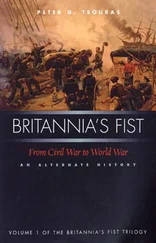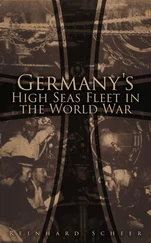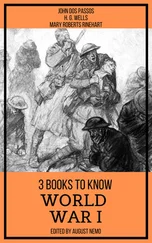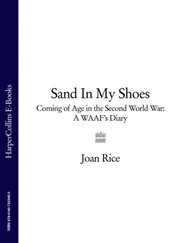General Jackson was not the only person to regard the tank as an ad hoc response to a unique set of circumstances that would not recur. This cast considerable doubt on the survival of the Tank Corps. But the Corps had two powerful supporters. King George V became Colonel-in-Chief on 17 October 1918 and provided a clear indication of his ongoing support by granting the ‘Royal’ prefix to the Corps on 18 September 1923. 5
The other supporter was Field Marshal Douglas Haig. Haig is often portrayed by tank diehards as being reactionary and obstructive in his attitude to tanks, but he was impressed by the demonstration of their employment in early 1916 and, in spite of only moderate success in the first year of their use on the battlefield, he maintained his support, and demanded ever-increasing quantities of tanks. 6
While the British Army made halting progress in the production of tanks and the doctrine for their use in the aftermath of World War I, it was even more difficult for the Australian Army to make a decision on the establishment and employment of tank units. The First Battle of Bullecourt would always return to haunt Australian soldiers in spite of subsequent successes at Hamel and in the Hundred Days. John Coates describes the enduring nature of the memory of First Bullecourt:
I graduated from Duntroon in 1955 and joined the 1st Armoured Regiment. It was not long before I realised that there was antipathy in the army at large towards tanks. I was accosted in the mess one night by an older officer from a different unit who proceeded to harangue me, not about the 1st Armoured Division’s failure to get overseas in World War II, but over the shortcomings of British tanks at Bullecourt in April 1917! 7
More importantly, there had been no Australian tank units in World War I, and thus no experience of the use of tanks except as a supporting arm. In addition, the Australian Army had no experience of the maintenance and logistics essential to keep tanks and crews fit for battle.
Formal planning for Australia’s post-war military forces began with a conference in Melbourne on 22 January 1920. The senior officers present all had significant wartime experience, and their task was to recommend the size, composition and equipment required for the peacetime forces. The recommendation for the Army was two cavalry and five infantry divisions to defend Australia. Infantry personnel would come mainly from the universal training provisions of the Defence Act , and the cavalry would be largely volunteers. The Conference made this statement concerning tanks:
The question of the employment of tanks and the formation of a Tank Corps is one which sooner or later must come up for practical consideration. Tanks have proved to be a highly effective reply to the tactical employment of automatic small arms fire and wire entanglements. Tank design has not reached its full development; present types are likely to improve in mechanism, armour, and armament. For these reasons immediate action on this matter is not considered prudent. Any organisation of tanks must, in like manner, be deferred, although the Conference recommends the acquisition of a few tanks for instructional and experimental purposes. 8
The deferral of action on tanks lasted until 1926, when the Australian General Staff submitted a proposal 9to send an officer to the RTC training school at Bovington. 10This was approved, as was the proposal for the purchase of four British tanks and the establishment of the Australian Tank Corps training cadre. 11
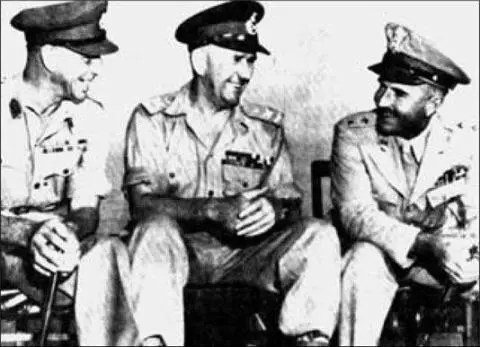
Tokyo, 1946. From left, Brigadier Ronald Hopkins, Major General William Bridegeford, and US Major General W. Chase. Hopkins was the prime mover in establishing Australian armoured forces. In 1939 he was a major, and his influence on decision-making was very limited. This accounts in part for the delay in raising those forces (source: Hopkins, Australian Armour , p. 94).
The officer selected, Lieutenant E.W. Lamperd, went to England in 1926 and returned in August 1927. The Australian Tank Corps was gazetted in December 1927. 12The first tanks arrived in September 1929 and heralded the formation of the 1st Tank Section. The Section’s inaugural parade was held on 22 March 1930. In 1931, Major R.N.L. Hopkins, a Staff Officer at Army Headquarters, proposed the formation of an armoured car regiment which was eventually established in 1933. 13In early 1937 Hopkins and Warrant Officer K.A. Watts were sent to Bovington to undertake comprehensive training as armoured crew, followed by experience with British field tank units.
As the 1930s progressed there was gradual mechanisation of some of the horsed regiments. In February-March 1938 a scout troop (mounted in Austin 7s) took part in a 2nd Cavalry Division exercise near Seymour. By 1939 Australia could boast two light tank companies and two armoured car regiments. They had little equipment, negligible logistic support, but plenty of enthusiasm. 14In May of the same year, Hopkins and Watts returned from their attachment in the United Kingdom (UK). Any hopes Hopkins may have entertained for the future of Australian armour must have been dashed by his subsequent interview with the Chief of the General Staff (CGS), who told Hopkins: ‘We aren’t going to have any tanks.’ 15
First wake-up call: 3 September 1939
Hitler’s territorial expansion began with the reoccupation of the Rhineland in 1936, and continued in March 1938 with the unification of Germany and Austria and the occupation of Vienna. His demand that the Sudetenland should become part of Germany precipitated the Munich crisis of late September 1938, and the subsequent granting of the demand. In March 1939 German troops marched into Czechoslovakia and occupied Prague and, on 1 September 1939, Hitler invaded Poland, the act of aggression that precipitated the Second World War. The early seeds of the development of Australian armour in World War II were sown in the first few months after the declaration of war in September 1939.
Political will
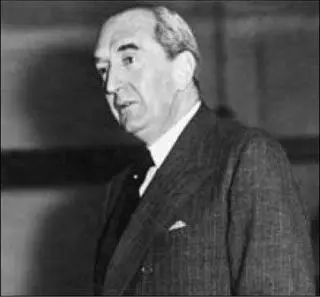
Stanley Bruce, First Viscount Bruce of Melbourne, was educated in Australia and England, and served with distinction in World War I. He entered politics, and was Prime Minister from 1922 to 1929. In 1932 he was appointed Resident Minister in London, and was High Commissioner in London from 1942 to 1945. With his contacts in the British Government and his political ability he was of great service in promoting Australian interests (NAA image No A8947, 32 Barcode 803547).
The Commonwealth generally and Britain in particular had lacked the will to stand up to Hitler in the late 1930s, exemplified by Chamberlain’s ‘Peace in our time’ message. Even after the outbreak of war there were those who remained willing to negotiate with Germany.

1941, Winston Churchill watches a column of Mark I Churchill tanks. Churchills were, at this time, very unreliable, and it is not recorded whether they all made it past the point where Churchill himself was standing (IWM H 18498).
The views prevalent in Great Britain and in Australia are clearly expressed in a cablegram from Stanley Bruce, the Australian High Commissioner in London, to Prime Minister Menzies. 16The French Government had suggested an early exchange of views on the problem of Allied war aims. Bruce commented:
Читать дальше





